Electrical and computer engineering senior design projects aimed at improving lives
By Bryan Hay
A pair of senior design projects in the Electrical and Computer Engineering (ECE) Department showcased the Engineering Division’s tradition of using technology to enhance quality of life.
Supervised by Yih-Choung Yu, associate professor and acting department head of electrical and computer engineering, this year’s senior students from ECE and two from integrative engineering designed and built a self-driving wheelchair and a smart living environment aimed at improving mobility and independence.
The projects were demonstrated May 20 on the fourth floor of Acopian Engineering Center before students, faculty, and visitors, including Ismail Jouny, Charles A. Dana Professor and department head, and John Nestor, professor emeritus of electrical and computer engineering.
The self-driving wheelchair, which functions like a self-driving vehicle, is designed for individuals with significant mobility limitations. Unlike traditional motorized or manual wheelchairs, it requires no physical pushing or joystick control from the user.
Intended for use in nursing homes or private residences, the wheelchair follows predefined routes using light detection, a ranging (LiDAR) sensor installed on the wheelchair, and beacon location sensors mounted on the walls. The user activates the chair through an electronic panel.
“The LiDAR sensor detects people in front of it or any obstacle,” says Yu, who has an extensive background in other wheelchair designs to improve patient mobility and independence.
In 2018, he teamed up with students and Lisa Gabel, professor of psychology and neuroscience, on a robotic wheelchair, operated via a neuro-headset, translating eye opening, closing, and blinking along with brain wave patterns into movement commands.
This new design, which Yu describes as a second-generation model, is equipped with a speaker and a flashing beacon for emergencies. A manual joystick is also included for caregiver control, such as moving the chair for charging.
“Imagine how this might help someone with a neurodegenerative disorder,” Yu says. “Their body is not really functioning, their hands cannot move, this chair offers a different kind of autonomy.” He describes this self-driving wheelchair as his “version two” design, noting that the earlier brain interface prototype was very demanding for some people, often with significant operational delays from processing brain activity. “This second generation is kind of an answer to that,” he says.
The aluminum-framed, 150-pound wheelchair was fabricated in Acopian. It is designed to operate on battery power for up to eight hours. The seat is a comfortable desk chair, and the wheelchair travels at a safe speed of 1 mph.
As his fellow ECE seniors quietly looked on, Robbie Leslie ’25 (electrical and computer engineering) rode the steadily moving chair on its maiden trip down the fourth-floor hallway. Despite a few minor detours, the chair successfully navigated its intended route, stopping and turning as designed.
Earlier in May, while visiting his family at home, Leslie had discussed the wheelchair project with his grandmother.
“Everything people use is engineered. Your phone is engineered. This building is engineered. Engineering makes the world run,” he says. “But engineering has the ability to help people who otherwise might not be able to do things. That was our goal with this wheelchair: to make it easier for somebody who might not have full motor functionality to get around.
“I was talking with my grandmother about one of my aunts who has mobility problems,” Leslie adds. “It reminded me there are people in my life who could benefit from something like this.”
Angela Busheska ’25 (electrical engineering and computer science), who worked alongside Leslie, says the lack of a reference model made the project both challenging and rewarding.
“We had to do it all ourselves. It required a lot of on-the-spot innovation,” she says, adding that the project always reminded her that it would possibly result in helping someone with physical needs regain independence. “That’s what made this such a challenging and inspiring Lafayette experience.”
Down the hall, another ECE senior team demonstrated a smart living environment designed to help individuals with limited mobility to control their surroundings – opening a door, turning on a television, closing a window shade – all from a set of table-mounted, illuminated translucent plastic circuit panels arranged like a keyboard.
Nestor volunteered to test the controls as Padmanabh Kaushik ’25 (electrical and computer engineering) explained the capabilities of the system.
The room was designed to help individuals with limited hand mobility. They can use accessible plastic panel devices to operate features in the room, including a voice interface as an added feature.
“We also had the caregiver in mind, who can monitor the patient all the time and look at the requests that are being made and also look at how the devices are being operated,” Kaushik says, noting that Nestor had used the interface to call up “Steamboat Willie,” the classic Mickey Mouse animation on Disney Plus.
Calum McConnell ’25 (electrical and computer engineering), one of the team members, says he appreciated the teamwork and camaraderie it took to make the project succeed, as well as the diversity of personalities and skill sets – from the motivational go-getters to the technically gifted who could program and develop mechanical designs.
For McConnell, the project also had deep personal significance. He lost his mom to amyotrophic lateral sclerosis (ALS), and the idea of using engineering to help others resonated deeply.
“That’s what it all comes down to with engineering,” he says. “It was always part of the Lafayette experience, knowing that what we do, the things we study, may ultimately lead to helping improve lives.”


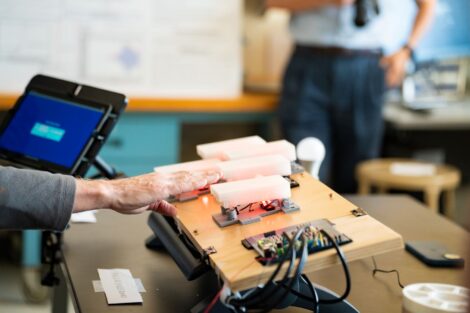
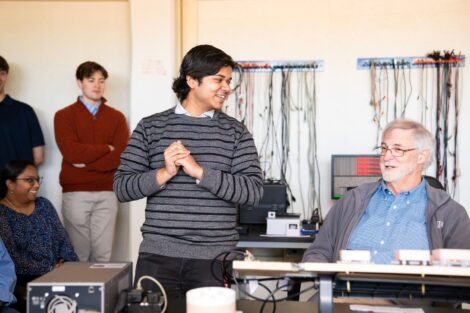
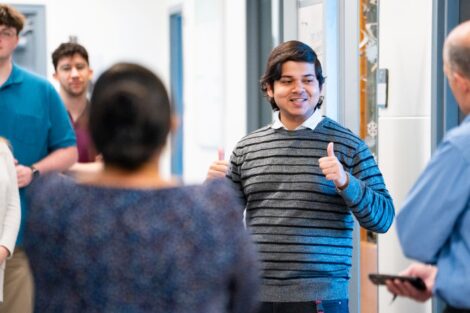
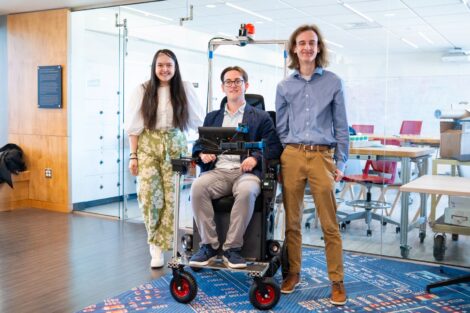
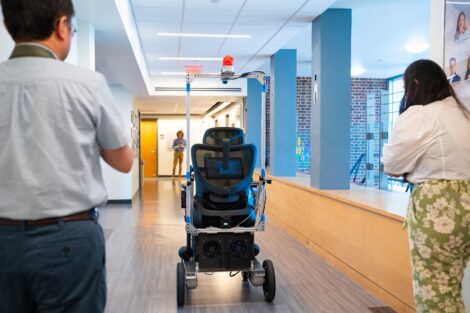
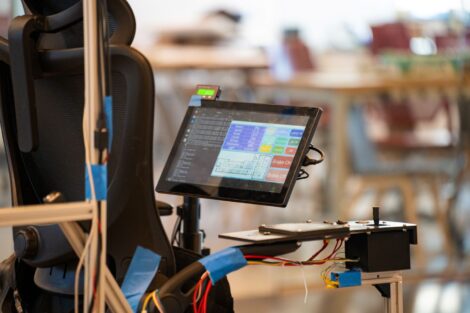
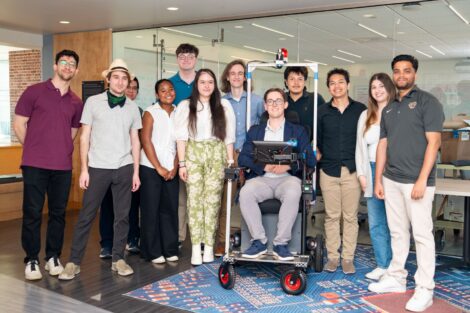
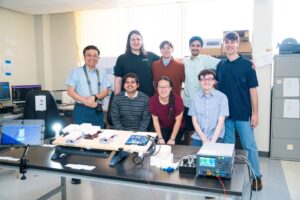
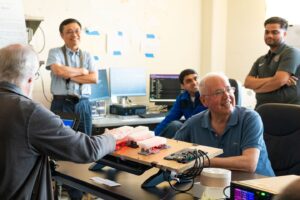
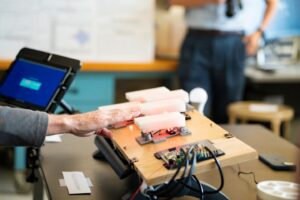
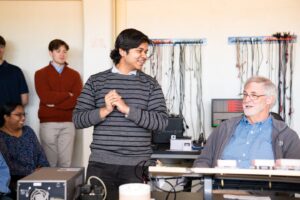
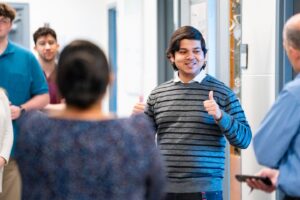
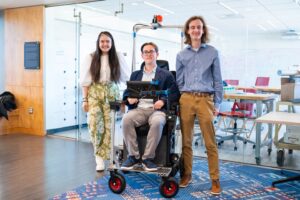
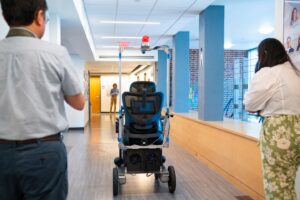
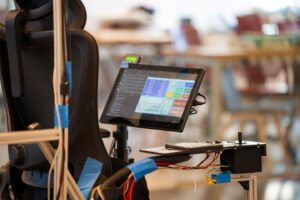
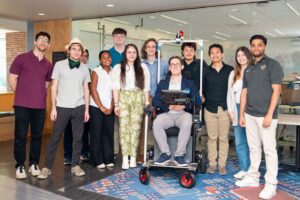

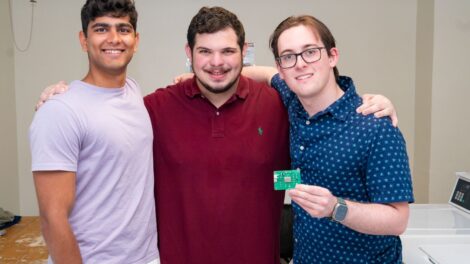
1 Comment
Fabulous co-operative innovative project. I am proud of all of you. Also for your concern to help people who have challenges and disabilities they have to deal with.
Comments are closed.